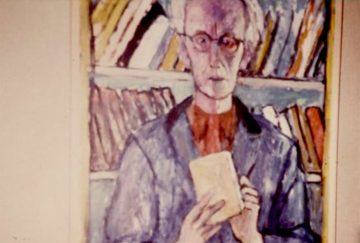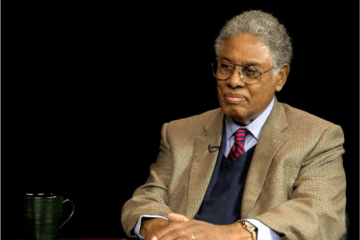Alice Blackhurst at n+1:

photographed and edited by Claire Dorn
IN 2017, amid the peak of #balancetonporc, France’s equivalent #MeToo movement, record-breaking crowds of women, keen for an experience of communal catharsis, passed through Sophie Calle’s Beau doublé, Monsieur le marquis!—perhaps as foil against the somber cultural malaise elsewhere. The exhibition, a collaboration between Calle and artist Serena Cocone, was hosted at the Musée de la Chasse et de la Nature, in Paris, where among taxidermy wild animals and a fetishist’s array of hunting armory, a selection of Calle’s previous projects, including excerpts from the ongoing text work Des histoires vraies (True Stories) and her 1981 piece La Filature (The Shadow), were reactivated alongside new ones. What might have been an unusual location for the work of an internationally acclaimed artist whose brand chords more with the starry entourages of Fashion Week than with dusty 18th-century archives was, in this case, perfectly apt: Calle, who in Suite vénitienne (one of her earliest works) followed a male acquaintance to Venice on a whim after a brief conversation at a cocktail party, has remained committed throughout her career to exposing and subverting the dynamics of the “chase” that patterns heterosexual life. In a minimally furnished room on the second floor, two new, inter-related series, Le chasseur français (The French hunter) and A l’espère (Lying in wait for), scoured these themes of carnal conquest once more.
more here.

 Alex Hanna, Emily Denton, Razvan Amironesei, Andrew Smart, and Hilary Nicole in Logic:
Alex Hanna, Emily Denton, Razvan Amironesei, Andrew Smart, and Hilary Nicole in Logic: Marta Figlerowicz in Boston Review:
Marta Figlerowicz in Boston Review: McMurtry
McMurtry Forty years is a long time. I have to say that India is no longer the country of this novel. When I wrote Midnight’s Children I had in mind an arc of history moving from the hope – the bloodied hope, but still the hope – of independence to the betrayal of that hope in the so-called Emergency, followed by the birth of a new hope. India today, to someone of my mind, has entered an even darker phase than the Emergency years. The horrifying escalation of assaults on women, the increasingly authoritarian character of the state, the unjustifiable arrests of people who dare to stand against that authoritarianism, the religious fanaticism, the rewriting of history to fit the narrative of those who want to transform India into a Hindu-nationalist, majoritarian state, and the popularity of the regime in spite of it all, or, worse, perhaps because of it all – these things encourage a kind of despair.
Forty years is a long time. I have to say that India is no longer the country of this novel. When I wrote Midnight’s Children I had in mind an arc of history moving from the hope – the bloodied hope, but still the hope – of independence to the betrayal of that hope in the so-called Emergency, followed by the birth of a new hope. India today, to someone of my mind, has entered an even darker phase than the Emergency years. The horrifying escalation of assaults on women, the increasingly authoritarian character of the state, the unjustifiable arrests of people who dare to stand against that authoritarianism, the religious fanaticism, the rewriting of history to fit the narrative of those who want to transform India into a Hindu-nationalist, majoritarian state, and the popularity of the regime in spite of it all, or, worse, perhaps because of it all – these things encourage a kind of despair. Carl Zimmer’s book begins with a bang. Not a Big Bang, but a small one. In the fall of 1904, a 31-year-old physicist, John Butler Burke, working at the Cavendish Laboratory in Cambridge University, made a “bouillon” of chunks of boiled beef in water. To this mix, he added a dab of radium, the newly discovered element glowing with radioactive energy, and waited overnight. The next morning, he skimmed the radioactive soup, smeared a layer on a glass slide and placed it under a microscope. He saw spicules of coalesced matter — “radiobes,” as he called them — that resembled, to his eyes, the most primeval forms of life.
Carl Zimmer’s book begins with a bang. Not a Big Bang, but a small one. In the fall of 1904, a 31-year-old physicist, John Butler Burke, working at the Cavendish Laboratory in Cambridge University, made a “bouillon” of chunks of boiled beef in water. To this mix, he added a dab of radium, the newly discovered element glowing with radioactive energy, and waited overnight. The next morning, he skimmed the radioactive soup, smeared a layer on a glass slide and placed it under a microscope. He saw spicules of coalesced matter — “radiobes,” as he called them — that resembled, to his eyes, the most primeval forms of life. The continuity stretching from the earlier flower and plant paintings to the landscape work in New Mexico comes from O’Keeffe’s lifelong obsession with looking at things. I mean that quite literally. How do you look at a thing? How do you see a thing? Well, you just look, don’t you? But O’Keeffe’s answer is, “No, you don’t just look, because you don’t know how to look.” So what’s the difference between looking in the normal way and looking in the O’Keeffe way? Much of it has to do with time. O’Keeffe liked to look at things for a long time. She’d stare at a single flower over and over again, hour after hour. We think we know what that means. But do we? I suspect the actual experience is crucial here. That’s to say, don’t assume you know what it means to look at one thing hour after hour unless you’ve done it. I’ve done it, sort of. I stared at a flower once more or less without interruption for over an hour. It was immensely difficult for the first twenty minutes or so. Then something changed. My vision started to surrender to something else. Everything suddenly slowed down and intensified. I started to see the flower as a whole, as well as the tiny individual parts, simultaneously. A kind of meditational state kicked in. My vision became a form, almost, of physical touching. It was sensuous and sensual, which is why all the critics who’ve talked about the sensuality of O’Keeffe’s flower paintings are not completely wrong.
The continuity stretching from the earlier flower and plant paintings to the landscape work in New Mexico comes from O’Keeffe’s lifelong obsession with looking at things. I mean that quite literally. How do you look at a thing? How do you see a thing? Well, you just look, don’t you? But O’Keeffe’s answer is, “No, you don’t just look, because you don’t know how to look.” So what’s the difference between looking in the normal way and looking in the O’Keeffe way? Much of it has to do with time. O’Keeffe liked to look at things for a long time. She’d stare at a single flower over and over again, hour after hour. We think we know what that means. But do we? I suspect the actual experience is crucial here. That’s to say, don’t assume you know what it means to look at one thing hour after hour unless you’ve done it. I’ve done it, sort of. I stared at a flower once more or less without interruption for over an hour. It was immensely difficult for the first twenty minutes or so. Then something changed. My vision started to surrender to something else. Everything suddenly slowed down and intensified. I started to see the flower as a whole, as well as the tiny individual parts, simultaneously. A kind of meditational state kicked in. My vision became a form, almost, of physical touching. It was sensuous and sensual, which is why all the critics who’ve talked about the sensuality of O’Keeffe’s flower paintings are not completely wrong. Artificial-intelligence systems are nowhere near advanced enough to replace humans in many tasks involving reasoning, real-world knowledge, and social interaction. They are showing human-level competence in low-level pattern recognition skills, but at the cognitive level they are merely imitating human intelligence, not engaging deeply and creatively, says
Artificial-intelligence systems are nowhere near advanced enough to replace humans in many tasks involving reasoning, real-world knowledge, and social interaction. They are showing human-level competence in low-level pattern recognition skills, but at the cognitive level they are merely imitating human intelligence, not engaging deeply and creatively, says  Somewhere out of the mysterious interplay between nature and nurture, internal and external factors, cultures and structures, and bottom-up and top-down forces there emerge the individual and group outcomes that we care about and which ultimately make the difference between human flourishing and its absence. What distinguishes various political ideologies, in effect, is how the line of causation is drawn, or, more specifically, from which direction. What gets left unexamined in the rush for compelling narratives and ideological certainty, however, is the territory between different causes and how they combine to shape reality. Few have gone further to map that territory than the American economist, political philosopher, and public intellectual Thomas Sowell.
Somewhere out of the mysterious interplay between nature and nurture, internal and external factors, cultures and structures, and bottom-up and top-down forces there emerge the individual and group outcomes that we care about and which ultimately make the difference between human flourishing and its absence. What distinguishes various political ideologies, in effect, is how the line of causation is drawn, or, more specifically, from which direction. What gets left unexamined in the rush for compelling narratives and ideological certainty, however, is the territory between different causes and how they combine to shape reality. Few have gone further to map that territory than the American economist, political philosopher, and public intellectual Thomas Sowell. In the study, investigators reported the extensive presence of mouse viruses in patient-derived xenografts (PDX). PDX models are developed by implanting human tumor tissues in immune-deficient mice, and are commonly used to help test and develop
In the study, investigators reported the extensive presence of mouse viruses in patient-derived xenografts (PDX). PDX models are developed by implanting human tumor tissues in immune-deficient mice, and are commonly used to help test and develop  According to the late Christopher Lasch, the advent of mass production and the new relations of authority it introduced in every sphere of social life wrought a fateful change in the prevailing American character. Psychological maturation—as Lasch, relying on Freud, explicated it—depended crucially on face-to-face relations, on a rhythm and a scale that industrialism disrupted. The result was a weakened, malleable self, more easily regimented than its pre-industrial forebear, less able to withstand conformist pressures and bureaucratic manipulation—the antithesis of the rugged individualism that had undergirded the republican virtues.
According to the late Christopher Lasch, the advent of mass production and the new relations of authority it introduced in every sphere of social life wrought a fateful change in the prevailing American character. Psychological maturation—as Lasch, relying on Freud, explicated it—depended crucially on face-to-face relations, on a rhythm and a scale that industrialism disrupted. The result was a weakened, malleable self, more easily regimented than its pre-industrial forebear, less able to withstand conformist pressures and bureaucratic manipulation—the antithesis of the rugged individualism that had undergirded the republican virtues. The first note known to have sounded on earth was an E natural. It was produced some 165 million years ago by a katydid (a kind of cricket) rubbing its wings together, a fact deduced by scientists from the remains of one of these insects, preserved in amber. Consider, too, the love life of the mosquito. When a male mosquito wishes to attract a mate, his wings buzz at a frequency of 600Hz, which is the equivalent of D natural. The normal pitch of the female’s wings is 400Hz, or G natural. Just prior to sex, however, male and female harmonise at 1200Hz, which is, as Michael Spitzer notes in his extraordinary new book, The Musical Human, ‘an ecstatic octave above the male’s D’. ‘Everything we sing’, Spitzer adds, ‘is just a footnote to that.’
The first note known to have sounded on earth was an E natural. It was produced some 165 million years ago by a katydid (a kind of cricket) rubbing its wings together, a fact deduced by scientists from the remains of one of these insects, preserved in amber. Consider, too, the love life of the mosquito. When a male mosquito wishes to attract a mate, his wings buzz at a frequency of 600Hz, which is the equivalent of D natural. The normal pitch of the female’s wings is 400Hz, or G natural. Just prior to sex, however, male and female harmonise at 1200Hz, which is, as Michael Spitzer notes in his extraordinary new book, The Musical Human, ‘an ecstatic octave above the male’s D’. ‘Everything we sing’, Spitzer adds, ‘is just a footnote to that.’ We tested 100 participants twice on a range of tests: some took them first in summer and then winter, and some in the opposite order. Among the tasks, there was a test of pure speed (‘press this button as quickly as possible as soon as you see a circle in the middle of the screen’); a test of immediate memory for digits; a test of memory for words presented
We tested 100 participants twice on a range of tests: some took them first in summer and then winter, and some in the opposite order. Among the tasks, there was a test of pure speed (‘press this button as quickly as possible as soon as you see a circle in the middle of the screen’); a test of immediate memory for digits; a test of memory for words presented